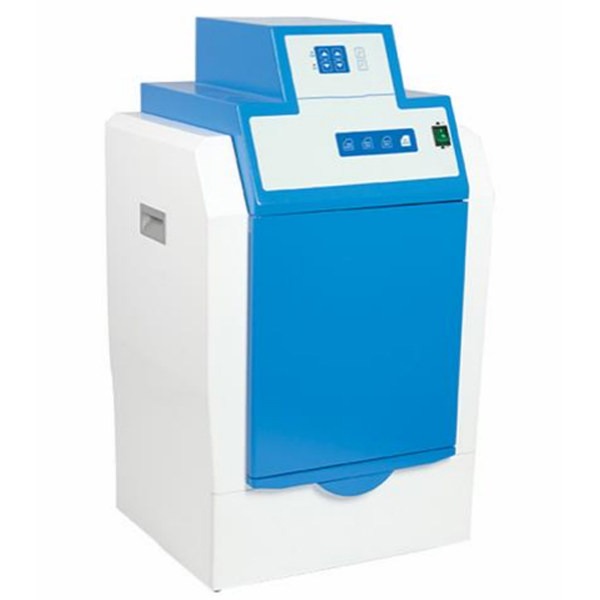In the realm of scientific discovery, progress is often measured in increments of knowledge gained and barriers overcome. The field of molecular biology is no exception, and at its heart lies the essential tool: the Gel Documentation System. These silent marvels of technology have ushered in a revolution in research, dramatically accelerating our understanding of DNA, RNA, proteins, and more. In this article, we explore how Gel Documentation Systems have become the unsung heroes of scientific progress, propelling research forward in profound ways.

What is a Gel Documentation System?
Before diving into their revolutionary impact, let’s grasp the essence of a Gel Documentation System. At its core, this laboratory instrument serves as an imaging solution for gels and blots, capturing high-resolution images of biological samples. These systems are equipped with an imaging chamber, a sophisticated camera, specialized filters, and powerful image analysis software.
What are the Applications of a Gel Documentation System?
1. The DNA Research of Gel Documentation Systems
One of the earliest breakthroughs was the application of Gel Documentation Systems in DNA research. Gel electrophoresis, a fundamental technique in molecular biology, allowed scientists to separate DNA fragments based on size. Gel Documentation Systems captured the resulting patterns, opening new vistas in genetics. Researchers could now verify the success of PCR reactions, analyze DNA samples for genetic mutations, and study DNA fingerprinting with unprecedented precision.
- Quantifying DNA: Beyond Bands and Lanes
The impact extended beyond mere visualization. Gel Documentation Systems enabled accurate quantification of DNA, eliminating the need for cumbersome radioactive labeling and hazardous exposure. Quantitative analysis became a breeze, paving the way for more advanced genetic experiments and diagnostic tests.
- Genomic Goldmine: DNA Sequencing and Genotyping
Genomics, the study of entire genomes, received a significant boost. Gel Documentation Systems played a pivotal role in DNA sequencing, genotyping, and genetic variation analysis. Researchers could now document and analyze DNA sequences, track genetic variations linked to diseases, and contribute to our understanding of human genetics, evolution, and personalized medicine.
2. Protein Profiling of Gel Documentation Systems
With the same precision, Gel Documentation Systems conquered the realm of proteomics. Scientists could now visualize and quantify proteins separated through SDS-PAGE (Sodium Dodecyl Sulfate-Polyacrylamide Gel Electrophoresis). This technology became instrumental in assessing protein purity, estimating molecular weights, and exploring protein-protein interactions. It revolutionized fields like cancer research, neurobiology, and immunology.
- Western Blot Mastery: A Pinnacle Achievement
Western blotting, a cornerstone technique in protein analysis, found a steadfast ally in Gel Documentation Systems. These systems captured the images of Western blots, enabling scientists to study protein expression, validate antibody specificity, and delve into intricate signaling pathways. It marked a milestone in understanding disease mechanisms and therapeutic targets.

3. Microbial Exploration of Gel Documentation Systems
Microbiology underwent a renaissance with Gel Documentation Systems. Scientists studied microbial communities in various ecosystems, from soil and water to the human gut. These systems unraveled the complexity of microbial interactions, providing insights into environmental sustainability and the human microbiome’s impact on health.
4. Diagnostic Use of Gel Documentation Systems
In the world of diagnostics, Gel Documentation Systems assumed center stage. They facilitated the detection of foodborne pathogens, verified food labeling claims, and ensured pharmaceutical product quality. These systems played a pivotal role in clinical diagnostics, enabling the identification of genetic disorders, infectious diseases, and cancer biomarkers.
5. Education Application of Gel Documentation Systems
Beyond research, Gel Documentation Systems have become vital teaching tools in academic institutions. They empower students and researchers to learn molecular biology techniques, enhancing their understanding of genetic concepts and experimental procedures. These systems nurture the scientists of tomorrow, ensuring a legacy of progress.
6. Image Analysis of Gel Documentation Systems
The impact of Gel Documentation Systems extends beyond the laboratory bench. Advanced image analysis software provides researchers with tools for quantification, annotation, and data storage. Digital documentation simplifies collaboration, allowing scientists to share results across borders and disciplines.
Conclusion: The Silent Revolution
In the world of scientific research, Gel Documentation Systems stand as silent revolutionaries. Their ability to capture and preserve the visual essence of molecular discoveries has transformed our understanding of biology. They have accelerated research, enabled precision diagnostics, and nurtured the scientists of the future. Gel Documentation Systems have left an indelible mark on the journey of scientific progress, one image at a time. In laboratories worldwide, these unsung heroes continue to empower researchers, unlocking the secrets of life’s intricate tapestry.

